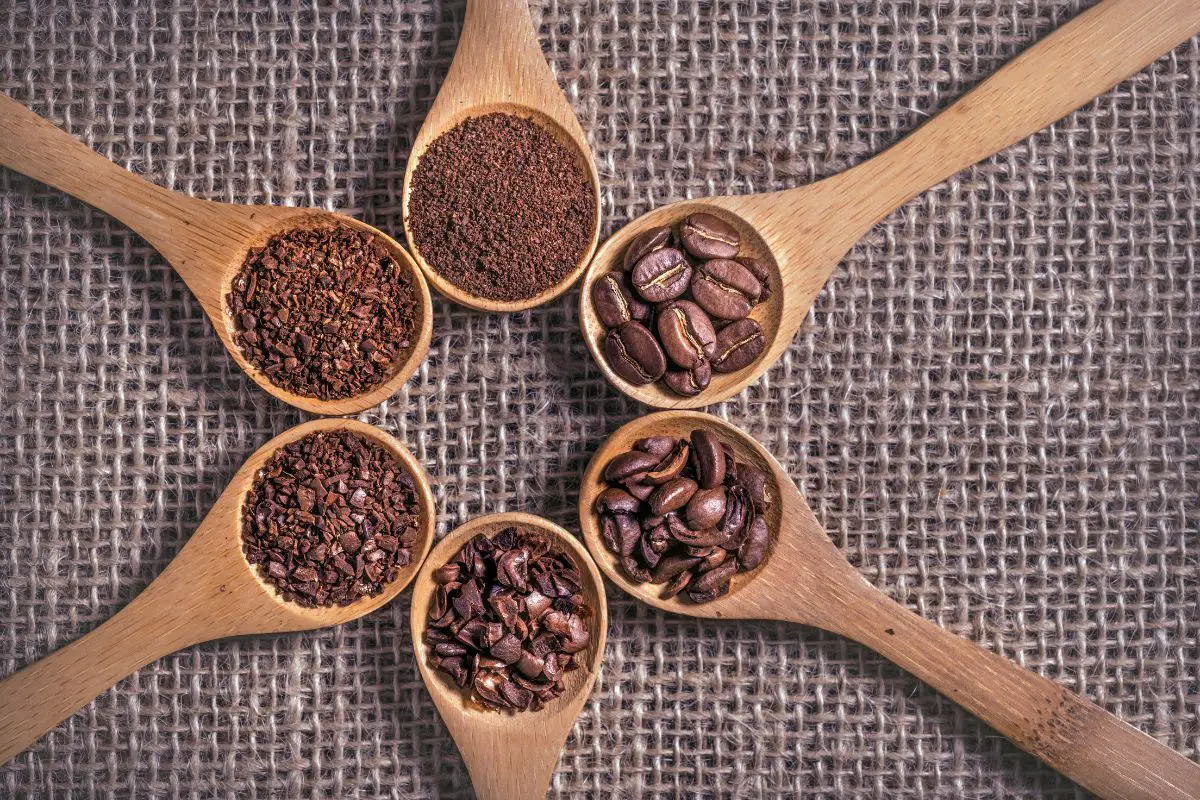As a coffee aficionado, you want to always make the tastiest cup of coffee possible. To achieve this, you need to pay special attention to each coffee brewing stage. Most importantly, it helps to use the right water temperature, brewing time, and freshly ground beans. Considering the numerous coffee brewing methods available, most people overlook the grind size. But why does coffee grind size matter? Let’s find out.

Why Grind Size Matters
Coffee grind size matters because it directly impacts the extraction rate and flavor. Generally, different grind sizes have varying surface area. It is the surface area of ground coffee that determines the extraction of coffee flavors. Since coffee is not dissolvable like salt or sugar, it requires water to extract flavors.
The more water interacts with coffee, the more the extraction. For instance, if you cut a coffee bean in half, you will increase its surface area, meaning more of it is exposed to water. If you cut the halves further, there will be further exposure to water. Consequently, larger coffee grounds take longer to extract flavors while smaller coffee grounds extract quicker.
Also, grind size affects resistance to water in brewing methods where water has to flow down through coffee grounds. For instance, if you run water through a cylinder full of small rocks and another full of sand, water will flow faster through the small rocks than the sand. It means that larger particles are less resistant to water flow.
Similarly, finer coffee grounds offer more resistance to water. There is less space for water to flow through finer grounds. Thus, there is increased water flow time. On the other hand, coarser grounds allow for increased water flow through them as they offer more space for water to flow through.
Coffee Grind Sizes
The coffee grind sizes you can use include:
1. Extra Coarse
Extra coarse grounds look like peppercorns. They are the largest ground coffee.
2. Coarse
Coarse grounds are a bit smaller than extra coarse coffee. They resemble sea salt.
3. Medium Coarse
It is a bit larger than medium and is similar to coarse or rough sand in size.
4. Medium
Medium grounds have a consistency similar to that of regular sand. It is a great size for testing different brews.
5. Medium Fine
It has a finer texture than sand. It similar to table salt.
6. Fine
Fine coffee grounds are a bit finer than table salt.
7. Extra Fine
Extra fine grounds are rare. You can get this grind size with a Turkish coffee grinder. It has texture similar to flour. It is also known as espresso grind.
Which Coffee Grind Size Should You Use?
Every brewing method requires a certain grind size for the best results. Here are the recommended grind sizes for different brewing methods:
Espresso – Making espresso coffee requires forcing pressurized water through compacted grounds. There is short contact time between water and the grounds. Thus, espresso works best with extra fine grind.
Turkish coffee – Turkish coffee requires using extra fine grind.
Siphon brewers – They brew coffee by forcing pressurized water through a chamber containing coffee grounds. After steeping the coffee, a vacuum is created inside the lower chamber. The vacuum pulls the brewed coffee through a filter. These brewers require medium-fine coffee.
AeroPress – It is a single-cup coffee maker that works like a French press. It works best with a medium fine grind.
Pour-over brewers – Although pour-over coffee makers come in different shapes and sizes, most of them use either a medium or medium-fine grind.
Moka pot/stovetop coffee maker – It works by using steam to force water upward through coffee grounds packed in a filter basket. It works best with a medium grind.
French press – It works as an immersion brewer, whereby water is added to ground coffee and allowed to steep for some minutes. Thereafter, the grounds are strained by plunging. The French press brews the best coffee when using coarse grounds.
Drip coffee – When making drip coffee, you get the best results when using medium or medium-coarse grinds.
Single-cup coffee makers – They are a form of drip brewers and include coffee makers such as the Verismo machine and Keurig. They work best with medium or medium-fine grounds.
Cold brew – Cold brew differs from other brewing methods in that it uses room temperature or cold water. Brewing time is prolonged and takes about 12 to 72 hours. The extraction is slow due to the low temperature. Thus, it works best with coarse or extra coarse coffee grounds.
Final Thoughts
Why does coffee grind size matter? It is important to use the right grind size for every brewing method. Failure to do so, you will either have under-extracted or over-extracted coffee. Under-extraction results from using a coarser grind than necessary while over-extraction occurs when you use a finer grind than necessary. Under-extracted coffee tastes salty, sour, and acidic. On the other hand, over-extracted coffee tastes muddy, bitter, and flavorless. Thus, use the recommended grind size to brew tasty, flavorful coffee.